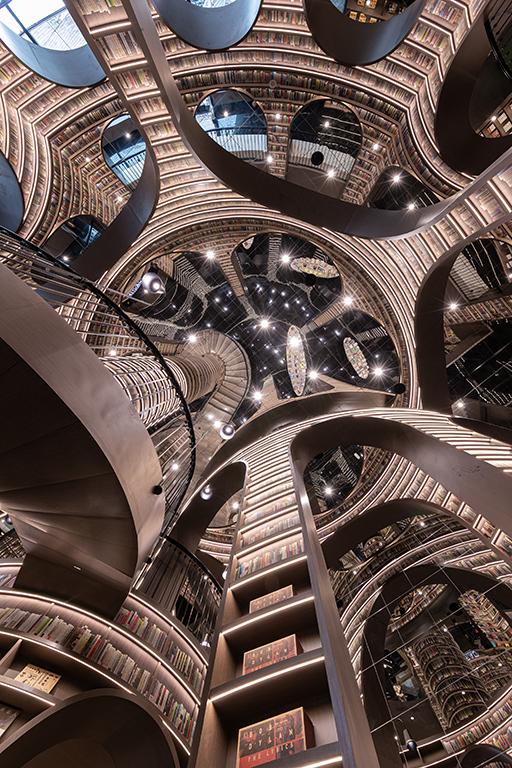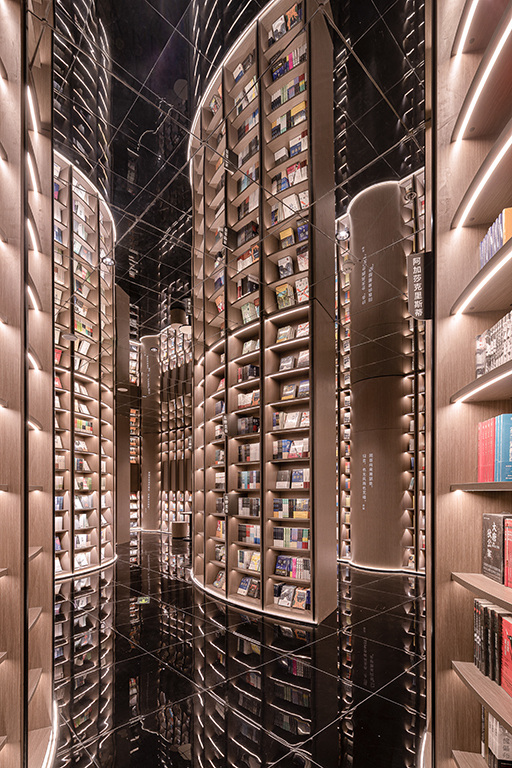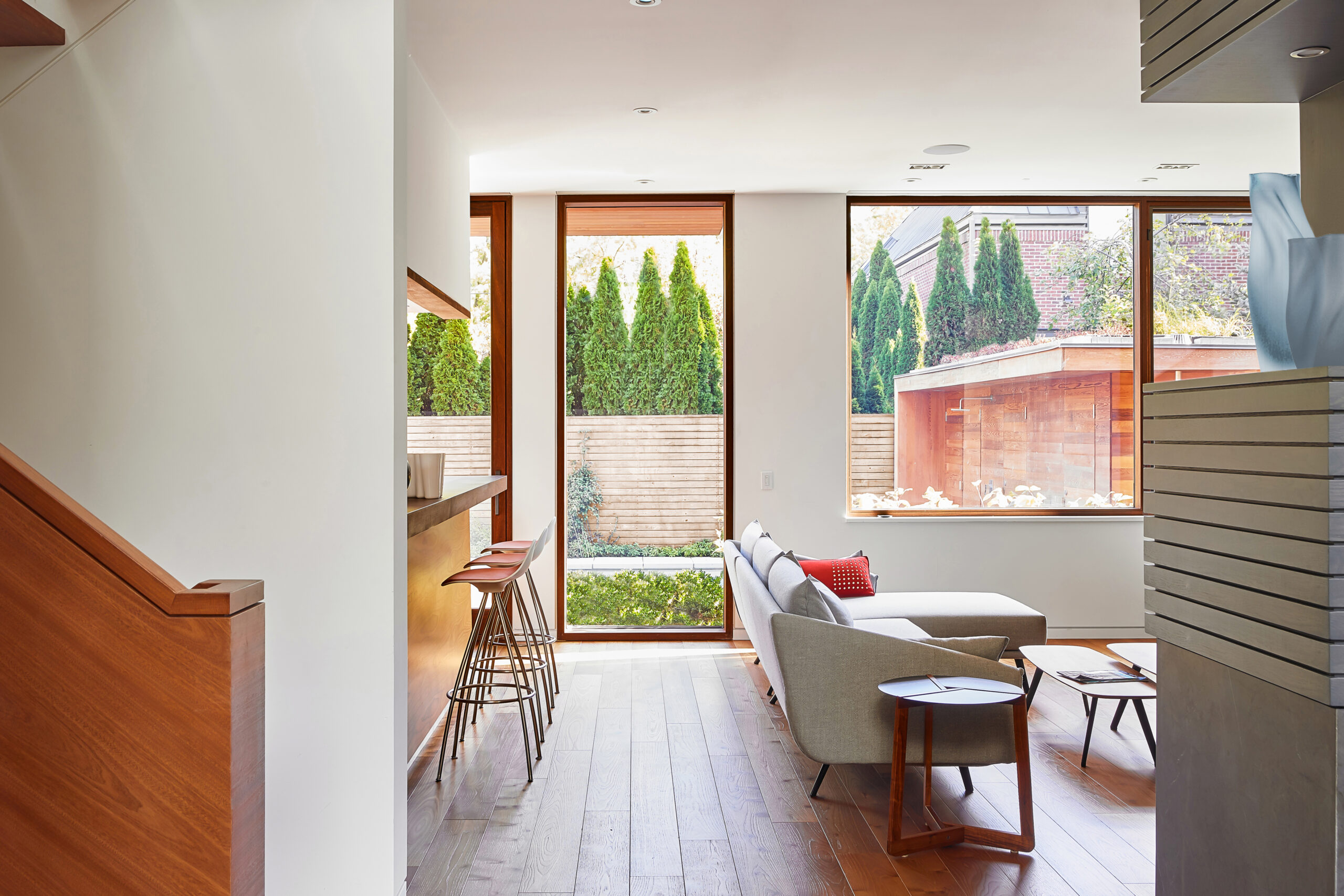An iconic designer of our time, the visionary Karim Rashid has been revolutionizing the design industry with his unique (almost futuristic) vision...
Read MoreDujiangyan Bookstore in China is fairytale-like and surreal
Located west of Chengdu in the Sichuan province, the bookstore features gravity-defying staircases and infinite bookshelves which looks like it came straight out of one of Dutch artist M.C. Escher’s fever dreams.
An article in the Smithsonian wrote that architect Li Xiang, founder of Shanghai-based firm X+Living, designed the 973 square metres bookshop, which draws inspiration from the Unesco World Heritage–listed Dujiangyan irrigation system. Certain architectural elements resemble water, nodding to the many rivers that flow through the city.
“We moved the local landscape into the indoor space,” Li tells Architectural Digest’s (AD) Elizabeth Stamp. “The project is located in Dujiangyan, which is a city with a long history of water conservancy development, so in the main area, you [can] see the construction of the dam integrated into the bookshelves.”
The Dujiangyan store which opened in 2020 is inspired by Zhongshuge’s typography and uses a mirrored ceiling to simulate a sense of limitless openness. Book-laden, ceiling-high shelves echo the curves of nature, while glossy, black-tile flooring makes reading tables scattered across the space resemble boats moored on a lake.
Visitors walking through the labyrinth-like store will find areas designed to fulfill different purposes. The first floor of Dujiangyan Zhongshuge houses a café and children’s area filled with colorful cushions, while the second floor accommodates seating for individuals to read, work, or meet. The bookstore has a collection of over 80,000 books — but admittedly, not all of them actually extend upward. According to Li, the firm used film printed with images of books to give the illusion that the titles stretch from floor to ceiling. “If we placed real books on the upper shelves, it’s not only hard for readers to reach them but also difficult for operators to take care of,” Li told AD.
As Li notes on Instagram, the tomes placed on the bookshelves’ highest levels are purely decorative. But all books within readers’ reach—some 80,000 volumes spanning more than 20,000 categories—are “readable,” she adds.
Photography by SFAP
Trending
Goodrich’s New Gallery Is A One-stop Visualisation Tool In Interior Design
Interior designing your living spaces is made easy and enjoyable at Goodrich’s new gallery. At the gallery, customers can immerse, touch, feel,...
Read MoreMaster Bathroom Ideas | 11 stunning ideas for dreamy bathrooms
The bathroom is a place to totally disconnect, relax and indulge. These modern bathroom ideas showcase some seriously gorgeous designs for your...
Read MoreSingapore Interior Designers Award 2021 | Call for entries
The 5th Singapore Interior Design Awards (SIDA) 2021 is now open to all interior design talents. SIDA 2021 is a prestigious design...
Read MoreMore on Interior Design
All White Interior Design: Shadow Box residence bleached out space nails the look
Minimal and boxy in presence, this three-storey residence stuck out amidst its placid suburban surrounding with its all white interior design concept....
Read MoreBringing Nature Into Interior Design
As the world population continues to urbanize, humans seek to improve on our well-being and expedite healing. Interior design begins with human...
Read MoreKimpton Saint George Hotel – Artisanal and quaint
The 10-storey high hand-painted mural of an owl outside Toronto’s Kimpton Saint George Hotel is hardly inconspicuous but a cheeky prelude to...
Read More











